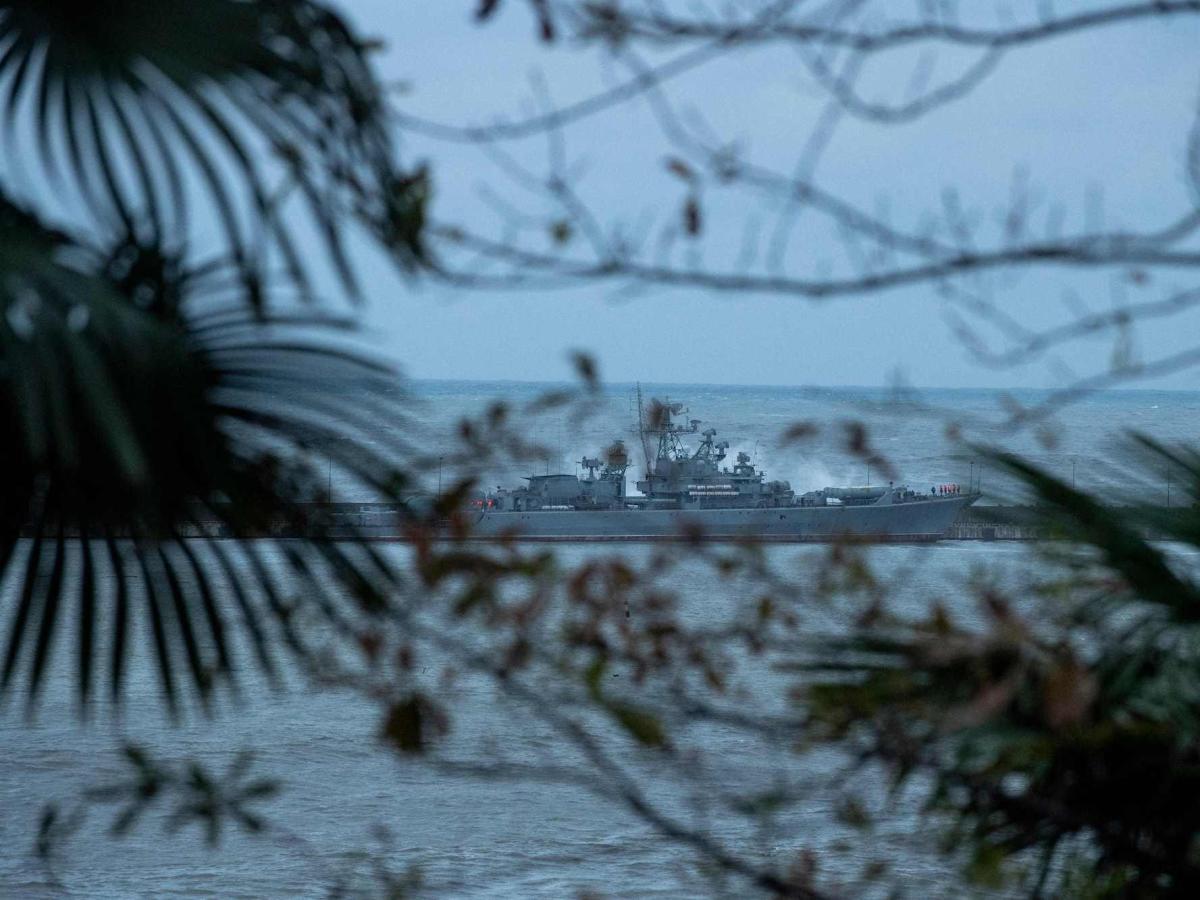-
Russia has started firing missiles at Ukraine from the Sea of Azov, a Ukrainian spokesman said.
-
Dmitry Pletenchuk said Russia is using the location because it believes it is safer than the Black Sea.
-
Experts told BI that ships there may be less at risk from drones at sea, but not from long-range missiles.
On Sunday, Dmitry Pletenchuk, a spokesman for Ukraine’s Southern Military Command, said that Russian warships had started firing missiles from the Sea of Azov, the Kiev Independent reported.
The sea, which borders occupied southern Ukraine, is connected to the Black Sea via the Kerch Strait. Importantly, Russia has control of the coastline.
The attack, which involved four missiles, was a “major turning point,” Pletenchuk said, with Russia using the Sea of Azov because it considers it “safer” than the Black Sea.
Russia’s Black Sea Fleet has suffered greatly, with Britain’s armed forces chief saying in February 25% of Russian ships in the waters had been sunk, damaged or destroyed since the beginning of the war.
The Ukrainian attacks forced Russian warships to withdraw from Crimea and move to safer waters, where they were also attacked.
According to the Navy of the Armed Forces of Ukraine, seven Russian warships were spotted in the Azov on Tuesday, two of which were equipped with Kalibr cruise missiles.
Matthew Boyse, a senior fellow at the Hudson Institute’s Center on Europe and Eurasia, told BI that Russia’s control of the entire Azov coastline makes it “difficult for Ukraine to deploy naval drones against Russian ships.”
But this does not mean that the ships there are safe from the Ukrainian drones and missiles, experts told BI.
“The Sea of Azov is relatively safer because the surface fleet can theoretically benefit from superior land protection and is seemingly inaccessible to Ukraine’s maritime drones,” said Basil Germond, a maritime security expert at Britain’s Lancaster University.
But he added that “Russian warships in the Sea of Azov are still subject to Ukrainian missiles and drones.”
A remote area
According to Mark Temnycky, a nonresident researcher at the Atlantic Council’s Eurasia Center, the apparent withdrawal from the Black Sea is a sign that Russian forces are “slowly learning from the mistakes they made over the past two and a half years.”
“Having seen their fleet destroyed by Ukraine, the Russians are now exploring new options to strengthen and protect the areas they illegally occupy,” he told BI.
The Sea of Azov is close to Russian-occupied parts of Ukraine, meaning Russian ships are better protected there, he said.
Russia is also building defenses around the Kerch Strait.
Earlier this month, satellite images showed Russia setting up ships and floating defenses around the Strait.
According to Scott Savitz, a senior engineer at RAND, an independent think tank, Ukrainian sea drones should reach the Sea of Azov via that route.
“This makes it easier for Russia to detect and target these USVs,” he said, using the acronym for unmanned surface vehicles.
“In addition, Russian ships in the restricted Sea of Azov can also take shelter under land-based missile defense systems,” he said.
That could hinder Ukraine’s drone and aircraft attacks.
According to Bryan Clark, a former US Navy officer and defense expert at the Hudson Institute, Ukrainian planes would have to fly around Crimea and risk being attacked by anti-aircraft fire on their way to launch points over the Black Sea.
Meanwhile, Russian “missiles can reach most of Ukraine from the Sea of Azov and ports along Russia’s Black Sea coast,” Clark said.
But the security provided by the Sea of Azov is not “absolute,” Steven Horrell, a non-resident senior fellow in the Transatlantic Defense and Security Program at the Center for European Policy Analysis, told BI.
“Docked ships are still very vulnerable to longer-range precision attacks, such as those provided by Western-sourced systems,” he said.
It could easily be another fiasco
Igor Delanoë, deputy head of the French-Russian Analytical Center Observo, said the Russian navy could face the same problems in the Azov as in the Black Sea.
“The Ukrainians, generously provided by their sponsors, can still use missile strikes or drones to damage surface ships in the Sea of Azov,” he said.
According to Savitz, Ukraine could also find a way to attack Russian ships there more effectively, “by taking advantage of their confinement in a small body of water, making them easier to track.”
Read the original article on Business Insider







